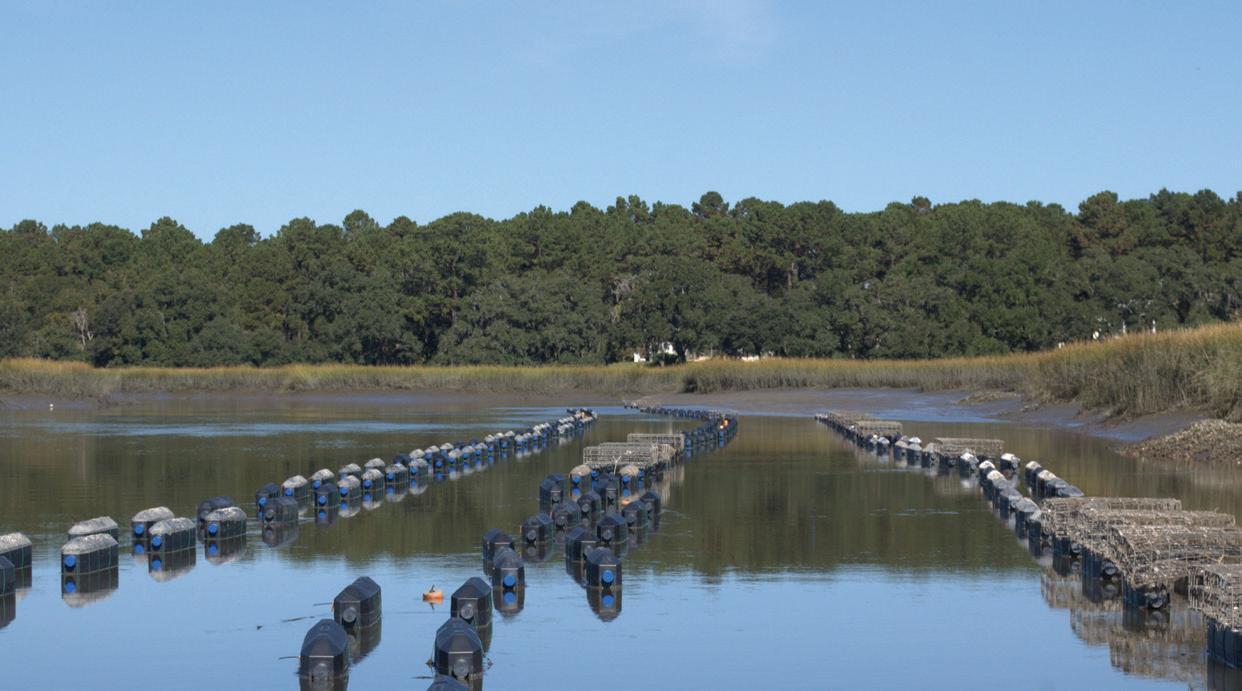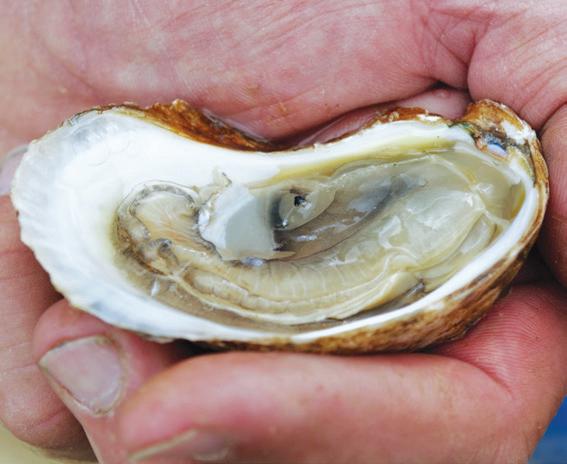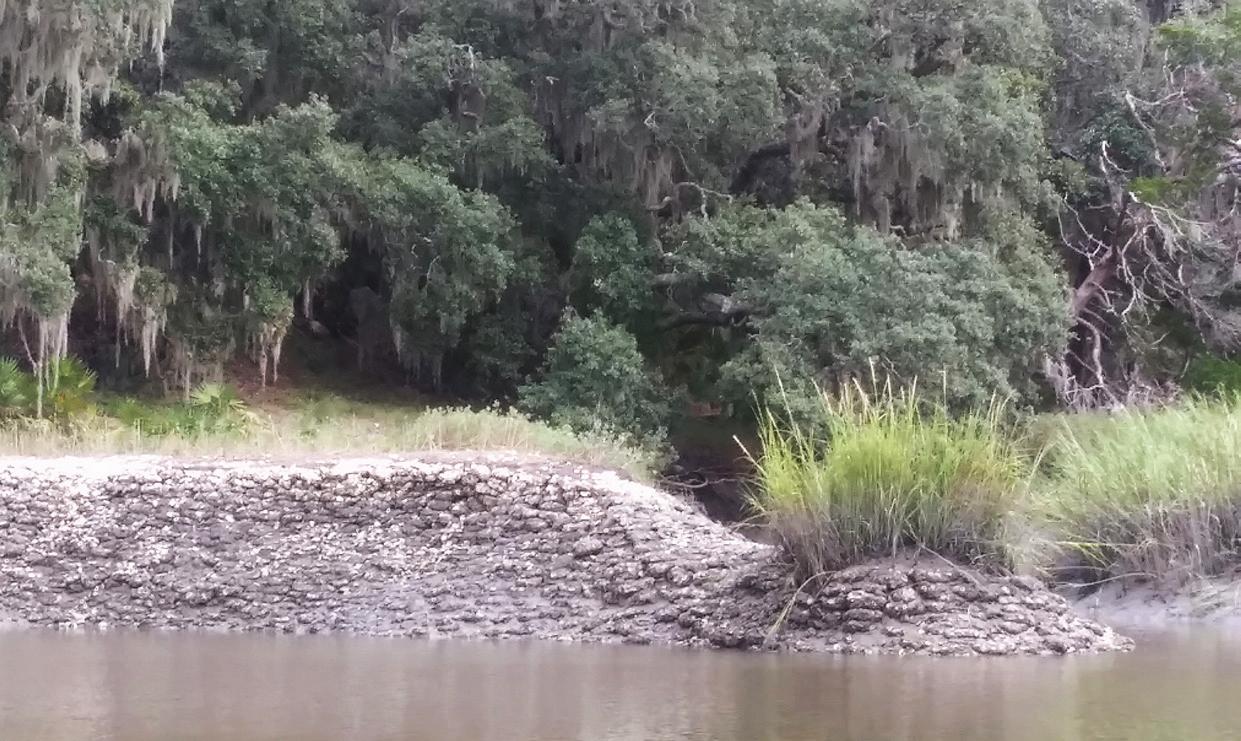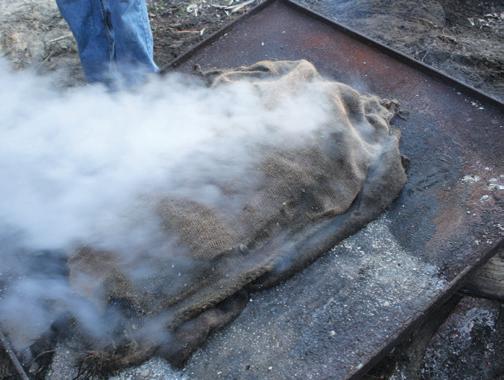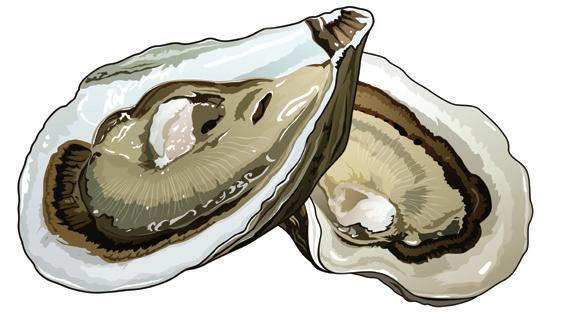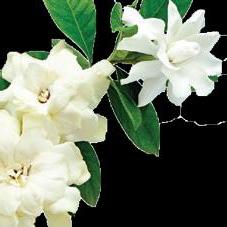Oyster Mariculture Industry Updates
This image: rows of floating cages at one of Frank Roberts' oyster leasers. Inset: A cage flipped over to kill off biofouling. Photos by Amy Thurman
By Jennifer Farmer
that stuff like barnacles, algae and sponges that grow on your boat if you leave it sitting in the water too long. The cages have pontoons attached to the top making it possible to flip the cages over and let them air dry. During the summer, Lady’s Island Oyster staff flip the cages over once every week to let them air dry overnight. Air drying kills the bacteria that attaches itself to the cages and oysters. This makes for a clean oyster and a reliable business model. Farmers in South Carolina can now harvest all year round thanks to a bill written by Frank, in 2017, which allows the harvest of triploid oysters in the summer. Triploid oysters are sterile, therefore they don’t have to spend energy on reproducing and stay flavorful and juicy throughout the summer. This bill also allows farmers to keep working to continue supporting their families, whereas normally they are out of work for months at a time. Not only does oyster farming produce flavorful, single oysters, but it also helps the environment. Oyster farming helps build reefs and attracts many forms of marine life, giving fishermen great fishing spots. Oyster mariculture is saving the wild oyster population by meeting the market demand for premium single oysters without having to take anything from the wild. Oyster mariculture is taking the pressure off wild reefs allowing them time to regrow from overharvesting. Georgia used to be the leading producer of oysters in the late 1800s to early 1900s until the oyster market crashed due to overharvesting and water pollution. In recent years efforts have been made to develop oyster farming in Georgia but we continue to lag behind other states. A bill was passed to allow oyster farming in Georgia, but the restrictions are so tight it’s nearly impossible to jump-start a successful oyster farming business and it’s unclear as to when or how this might change for the better. Frank stated that oyster farming is the fabric of the lowcountry, and I couldn’t agree more. I also look forward to trying some of those single oysters soon!
G
rowing up in Georgia, I’m no stranger to the delicacies of lowcountry boils and oyster roasts. The spicy, sweet taste of corn and the firm, salty taste of oysters dominate my memories when I think back to my childhood. And now it’s that time of year, when people are lining up at their local seafood markets or going out on their own to obtain wild oysters. In South Carolina, however, and many other states, things are done differently. Lady’s Island Oyster, founded in 2007, is a thriving oyster farm helping to change the oyster farming industry. I had a chance to talk with the owner, Frank Roberts, and the farm manager, Julie Davis. Frank and Julie are incredibly passionate about what they do, and they had a lot to say about the industry. We talked about the importance of oyster farms, changes in the industry, and the long, rich history of oyster farming in America. Most oysters from Georgia grow in clusters. This is because oyster larvae, when they are just days old, adhere to other oyster shells in order to grow, building on each other for a stable surface. In recent years, the farming of single oysters, which Julie helped pioneer, has been groundbreaking in the South. With the help of floating Oyster Gro cages, singles now dominate the market. Prior to floating cages, oyster farmers used bottom cages, which sit on the river bottom where heavy sediment is present. The oysters don’t grow as well because they have to work harder to feed, which means it takes longer to mature and many don’t make it due to the heavy sediment. Floating cages sit closer to the surface where more nutrients are readily available. This means the oysters don’t have to work as hard to filter food resulting in faster growth and a cleaner oyster. Floating cages also allow for air drying to control biofouling – all October 2020
Southern Tides Magazine
17

